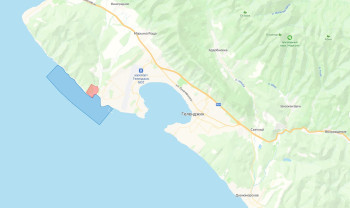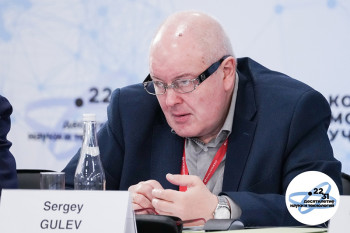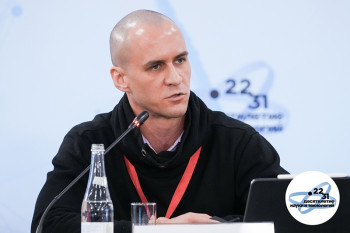Today, 17 carbon polygons operate in different regions of the Russian Federation. The Institute of Oceanology is the operator of one of these polygons based on the Southern Branch in Gelendzhik: 7 ha + 4 ha + connection of a 15 ha + 12 km sea coast area to a depth of 700 m. On the basis of the polygons, researchers measure and monitor greenhouse gas fluxes: carbon dioxide CO2, methane CH4, nitrous oxide NO and some others.
On December 1-3, 2022, the Sirius Park of Science and Art in Sochi hosted the II Congress of Young Scientists, which brought together more than 4,000 participants. Our employees DSc Sergey Konstantinovich Gulev and Mikhail Krinitsky participated in the meeting of the Expert Council under the Ministry of Education of Russia on issues of carbon balance control in an expanded format. Representatives of India, France, Egypt, Iran, Kazakhstan, Brazil, China and Serbia met with Russian experts on carbon polygon research at the congress site.
DSc Sergey Konstantinovich Gulev, head of the Sea-Air Interaction and Climate Laboratory, is the head of the Expert Center, organized on the basis of the IO RAS, for scientific and methodological support for the creation and operation of carbon polygons in the Russian Federation.
PhD M.A. Krinitsky, senior researcher of IO RAS, at the meeting presented a report on the progress of work on clarifying the flows of climatically active gases in Russia using artificial neural networks based on satellite data and the results of high-precision ground-based measurements carried out using the turbulent pulsation method. The report touched upon issues of improving the reliability of estimates of greenhouse gas fluxes. To do this, it is necessary to expand the network of ground observation stations. Also, the first results of work on the development of a method for the optimal location of covariance stations were demonstrated, which makes it possible to most effectively reduce the uncertainty of integral estimates of the fluxes of climatically active gases.
Measurement and monitoring at polygons is needed to answer the "how much" question regarding greenhouse gas fluxes. Among the climatically active gases, carbon-containing gases are primarily distinguished: carbon dioxide (CO2) and methane (CH4). To reduce greenhouse gas emissions in the territories or to increase their absorption at carbon landfills, they conduct research on technologies and approaches to increase the absorption capacity of territories, develop and test measurement methods, install and maintain measuring equipment, and organize educational events.


